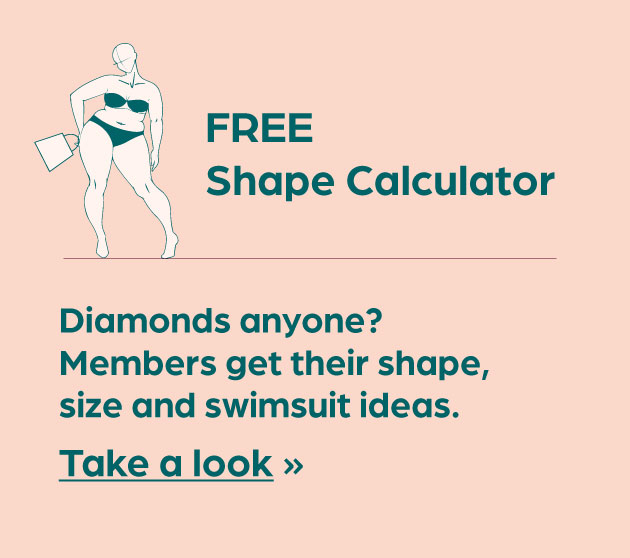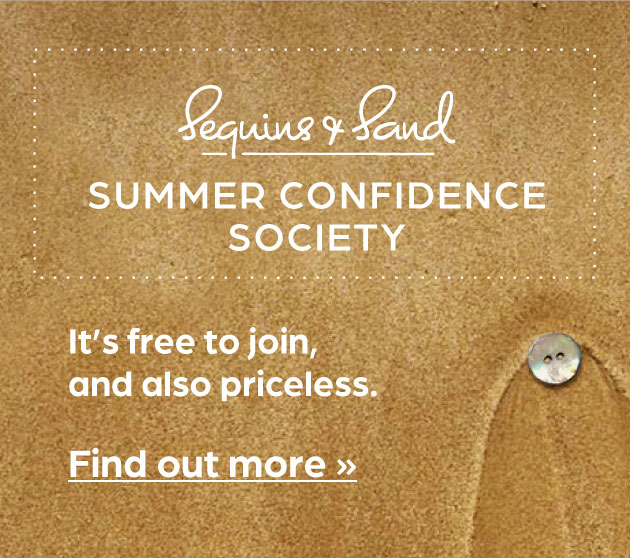We know that movement is medicine and in the case of bone health that is absolutely is true.
Why Care?
The primary objective of looking after our bones is to minimise the chance of breaking them as we age. Because fractures often means a reduced quality of life, less independence and in the case of a fractured hip, a 1 in 4 chance of dying in the first year post fracture. We all want to live longer, well and bone health is a prime indicator of that quality of life.
Midlife is a time when our bone health declines more rapidly than at any other. As a women in our menopause transition years, our bones will lose 10-20% of their mass. And from there will gradually decline year on year. With that decline, comes life limiting complications.
So what can you do?
Let's look at the science, the proof which sets the scene for how and what you can do to help your bone health. The power IS in your hands, literally.
Exercise: The Science, The Proof
Bones are living, ever changing tissue. They go through a process called Remodeling as they break down and build up at the cellular level. We have a German surgeon, Julius Wolff to thank for that finding and his law is used today as a way to understand how this happens. The amount of force or 'loading' bones are subjected to will influence their remodeling - known as Wolff's Law.
"Wolff's Law states that bones will adapt to the degree of mechanical loading, such that an increase in loading will cause the architecture of the internal, spongy bone to strengthen, followed by the strengthening of the cortical layer." (Recall that diagram from Edition 1 on the structure of bone).
"Furthermore, a decrease in stress on the bone will cause these bone layers to weaken. The duration, magnitude, and rate of forces applied to the bone (in other words, tendons pulling at their attachments) dictate how the integrity of the bone is altered." (Physiology, Bone Remodeling - National Library of Medicine).
Wolff's Law is foundational in appreciating that movement, loading bones, will help to strengthen them. The foundation of Exercise for bone health.
Dr Belinda Beck's Work - The Case For Lifting Strong:
A shout out to Dr Belinda Beck. An Aussie who is one of the most respected researchers in the exercise for bone health arena. Her 2017 LIFTMOR clinical study of 101 post menopausal women with low bone density, clearly showed that doing the right kind of exercises, the right way, significantly improved bone health. Participants were asked for 8 months to perform high intensity resistance and impact training or HiRIT exercises. Bone density was measured pre and post study in addition to functional performance like timed sit to stand, 'up and go' movements and reach. Others did a low intensity program at home (these were the control group).
Comparing the supervised HiRIT group to the control group, these were the findings:
- Bone mineral density (BMD) at the lumbar spine improved +2.9% vs -1.2% for the control group; 12% max. improvement
- BMD at the femoral neck (hip) - 0.3 ± 2.6% versus -1.9 ± 2.6%; 6% max improvement Now this is not much of an improvement on face value but when Dr Beck applied the data into additional software that showed her a 3D representation of the bone (as opposed to BMD readings done with a DEXA machine that takes 2D images) it showed incredible results in cortical thickness.
- Femoral neck total cortical thickness (where fractures most commonly occur with poor bone health) - +13.6 vs +6.3 and an increase of +27.1% improvement in cortical thickening at the top arc of the femoral neck, again, where most fractures occur.
Some of those % improvements might seem small but in terms of how slowly bone builds, they are significant. Remember, as we age we tend to lose more bone than we replace so any positive change is indeed, very positive!
If you want to watch Dr Beck present her findings in an easy to follow presentation then head here. She explains it very simply and clearly.
These studies were eye-opening at the time because back then, women with osteoporosis and osteopenia were not encouraged to lift weights, believing they could do further harm, possibly fracturing their already weakened bones.
The Right Moves For Your Bone Health
The exercises performed by the participants in Dr Beck's study then formed the basis of her well recognised ONERO exercise program. At her Bone Clinic here in Brisbane, clients are supervised using the ONERO program. Their progress is recorded, contributing to Dr Beck's ongoing research.
Since her 2017 study, she has gone on to monitor the results of using the ONERO program for 619 participants and 532 who did not. Following their progress for 12 months. Similar findings to her 2017 studies were revealed.
Significant BMD increased for the group that did the ONERO program consistently vs those who did not. In addition to this, posture improved, reach extended and back strength improved too.
Dr Beck's work is truly remarkable. It has the potential to significantly improve our bone health. She's currently expanding her ONERO program internationally and features on many high profile podcasts too. So good. Congratulations and thank you Dr Beck.
Movement is indeed medicine. These studies have shown that when done correctly, strength and resistance exercises definitely help to improve bone health. The right moves, the right way. With supervision when using weights. I can't stress that enough.
Equally the opposite holds true. If you don't load bones up as you age, your bone health is likely to decline. They have studied the bones of Astronauts on space missions where no weight is put on bones. "For every month in space, astronauts' weight-bearing bones become roughly 1% less dense if they don't take precautions to counter this loss. Muscles, usually activated by simply moving around on Earth, also weaken because they no longer need to work as hard. This loss of bone and muscle is called atrophy." (NASA)
Important Note: The exercises to load your bones and improve your bone health must be done with supervision for safety and effectiveness with a professional who knows bones and how to work with osteoporosis and osteopenic conditions.
Your Needs, Your Moves.
Whilst these findings help us appreciate the difference the right exercise, done the right way can improve our bone health, it's important to get help that is tailored to your specific health situation and needs. With trained professionals who know what they're doing specifically for bone health.
That's why I have Marie Larkin on my team. She's a brilliant physiotherapist specialising in womens' health at Hiya Health here in Brisbane and has kindly shared some of her knowledge here. She knows my clinical history and my body very well. What it needs and what it's capable of, without causing damage.
Having a condition like Osteoporosis can cast significant doubt on what you feel you should and shouldn't do when it comes to movement. And that can hold you back. We don't want that. We want you to be able to get in there and do. Gather trusted experts and work with them for the right outcomes for your specific and individual needs.
Okay...that said. Let's move on :)
Load Me Up & Stress Me Out!
"Bone loading is so important. Engaging in weight-bearing and resistance exercises stimulates bone remodeling and growth, reducing the risk of fractures by maintaining or even increasing bone density." Marie Larkin.
We need to put stress on our bones to load them up. The right amount of stress in the right way to suit our individual needs. Exercise done on our feet so we bear our own weight, which will jolt bones rapidly and firmly. Those sorts of movements are 'bone loading'. Things like:
- Stair walking (and stomping), Skipping, Jogging or Brisk Walking, Jumping.
- Step ups
- Squats
Unfortunately swimming, which is great for so many health and wellness reasons, is not a bone loading activity. Nor is bike riding.
Resistance Training involves using free weights, gym equipment and elastic bands to increase resistance against the movement to strengthen muscles around bone and joints including our spine. So too is reformer pilates using adjustable resistance springs.
Things like:
- Lunges and Squats (with resistance equipment), flexion and extension movements at various joints like hips, ankles and shoulders for example.
- Squats with weights
- Dead lifts
- Overhead press
As well as exercises to strengthen our core (abdomen area) and back muscles to support our spine.
Beyond Improving Bone Density & Strength
You are more than your T-Score. I think that's really important to remember. T-Score measures bone density. What we're mostly concerned about is fracturing. And fractures involve falling. So beyond doing exercises to improve bone health, it's equally important to do activities that will prevent you from falling and that means working on your balance and co-ordination.
Balance & Co-Ordination
"Exercises that are aimed at improving balance and coordination are essential for enhancing overall physical function and mobility as we age - importantly reducing the likelihood of us falling as we get older, or at least reducing the risk of fracture if we do." Marie Larkin.
Activities that test our balance by reducing our base support eg: instead of standing on two feet, stand on one. Add another movement, say with your arms, as you are on one foot. Move in multiple directions.
Yoga and Pilates are great for balance, co-ordination and strength too. They are brilliant for flexibility. Dance it out girlfriend! Keep on moving!
There are many ways we can improve our balance and co-ordination AND they're really accessible too. No equipment needed. But know-how is important.
Posture
"Maintaining good posture is important in promoting the health of your spine, reducing strain on joints, tendons and muscles, and helping with balance. In combination with good moving and lifting habits, these exercises may help to prevent problems in the future." (Royal Osteoporosis Society).
Muscles & Bones
Muscles and bones are besties. They look after each other. When we move we help our muscles and our bones. Strong muscles means better support for our bones. This is another reason to get lifting in the gym girls. Again, the right movement in the right way. Muscle mass matters as we age because like bone, if we don't use them as much, we lose them.
Final Thoughts
As daunting as it might be if you have been diagnosed with osteoporosis or osteopenia, poor bone health, don't let that stop you. Now more than ever it's important to step up and get the right help - the right moves the right way.
Being your own health advocate, the champion of your health is empowering. Don't wait until it's too late and your options are limited. That will have you feel like you have less agency and we don't want that.
Ask your health team about the moves you can do for your bone health. Get help from those who know about bones and what to do for you like an exercise physiologist or physiotherapist. If they're not in your health team, go get them. They'll help to keep you accountable too.
Consistency is key. Turn up each week for you. Future you will thank you for it.
Because girl, you are just getting started.
Remember the contents of this are meant for education purposes only. This newsletter is here to spark thoughts and conversations not to give advice. Conversation not consultation. I'm not a doctor or a qualified health professional offering advice. That's on you to glean from your health team and determine what's best for you.
Anita xx
p.s. Scroll to look out for other blog posts in my Bone Health Series. They're near by so it won't take long to find them :)
===========
OTHER WAYS TO CATCH ANITA:
Podcast: Midlife Unfiltered - The Season of Me.
- Watch and listen to it on Substack (you don't have to have an account to do so. But if you want to know when we post new stuff, subscribe while you're there!). We're also on YouTube. or
- Listen to it where ever your like to listen to your podcasts.
Subscribe to my weekly newsletter Midlife Mojo
I hand curate Midlife Mojo for you with love. Finding recent research on topics that help to step into and through midlife with power. To bring awareness and encourage you to be your own health advocate and ask the questions of your health team to get the outcomes that intuitively you know are the right ones for you. Subscribe here.



